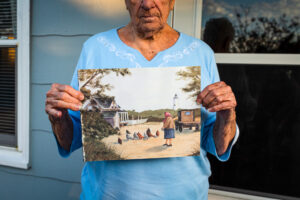Support Hidden Compass
We stand for journalism, science, history, and hope. Make a contribution to Hidden Compass and stand with us.
The women jump and dance. They whistle and sing, blow their horns and taunt the men, who are armed with whips. I watch as one woman leaves the group and pulls a man from the crowd. She encourages him to lash her.
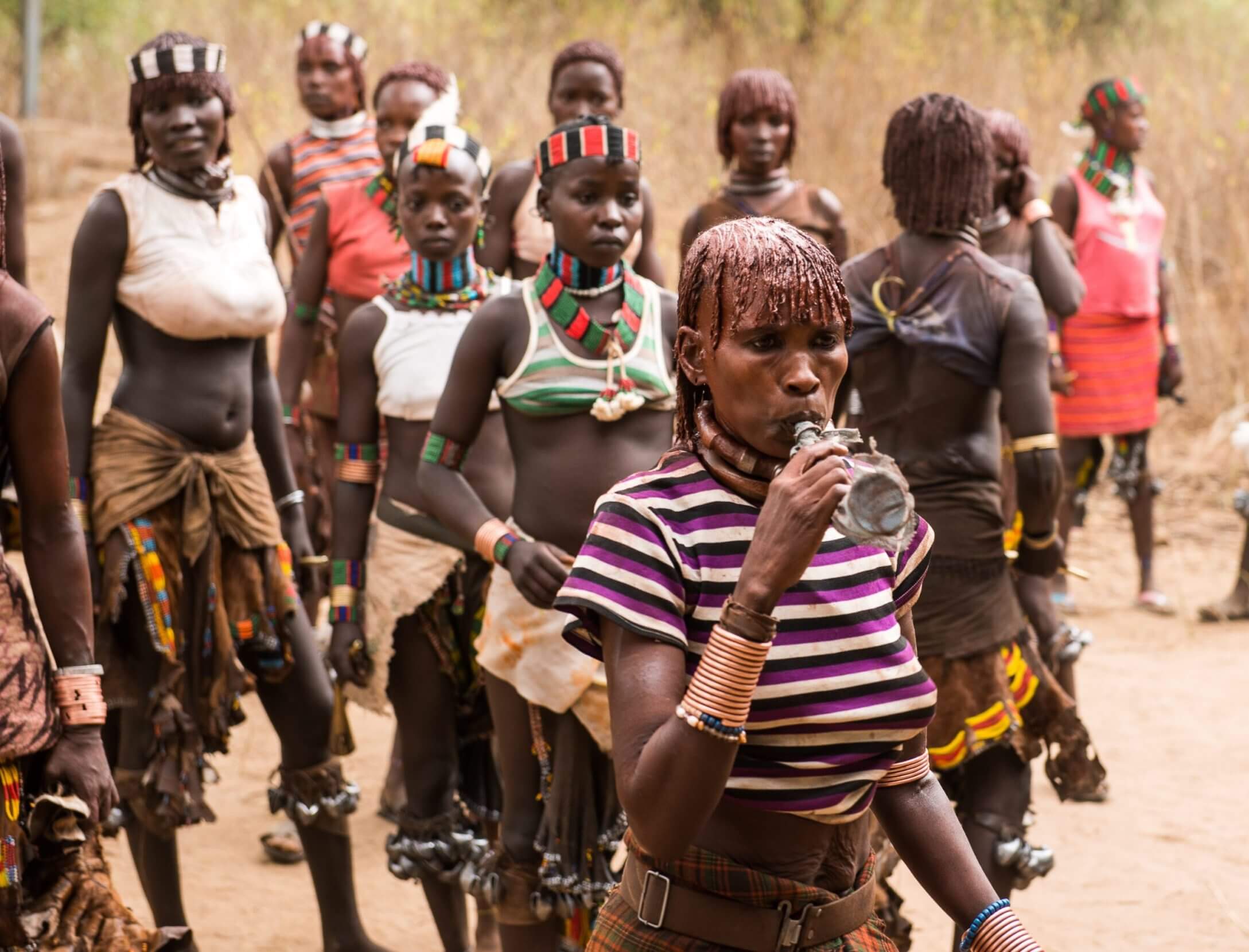
In the Lower Omo Valley, Hamar women gather. They jump, sing, blow horns, and encourage the men of the tribe to lash them with whips. When a man does not whip them with enough force, they taunt him. This is all part of a Hamar ritual. PHOTO: DR. GILAD FISKUS
In the Lower Omo Valley of southwestern Ethiopia, eight tribes — including the Hamar — live side by side. Their members number in the hundreds of thousands. Each tribe has its own customs and, often, its own language. Since the dawn of humanity, the Lower Omo Valley has been a confluence of cultures and ethnic groups.
I’m here hoping to witness Ukuli Bula — the bull jumping ceremony in which a Hamar boy becomes a man. My attention, however, is immediately drawn to the women. Their backs are bloodied and scarred, but they seem to show no pain as they urge the men to lash them harder. This, I learn, is also part of the Hamar ritual. The wounds and the scars left behind are symbols of the women’s love and devotion.
I take my pictures.
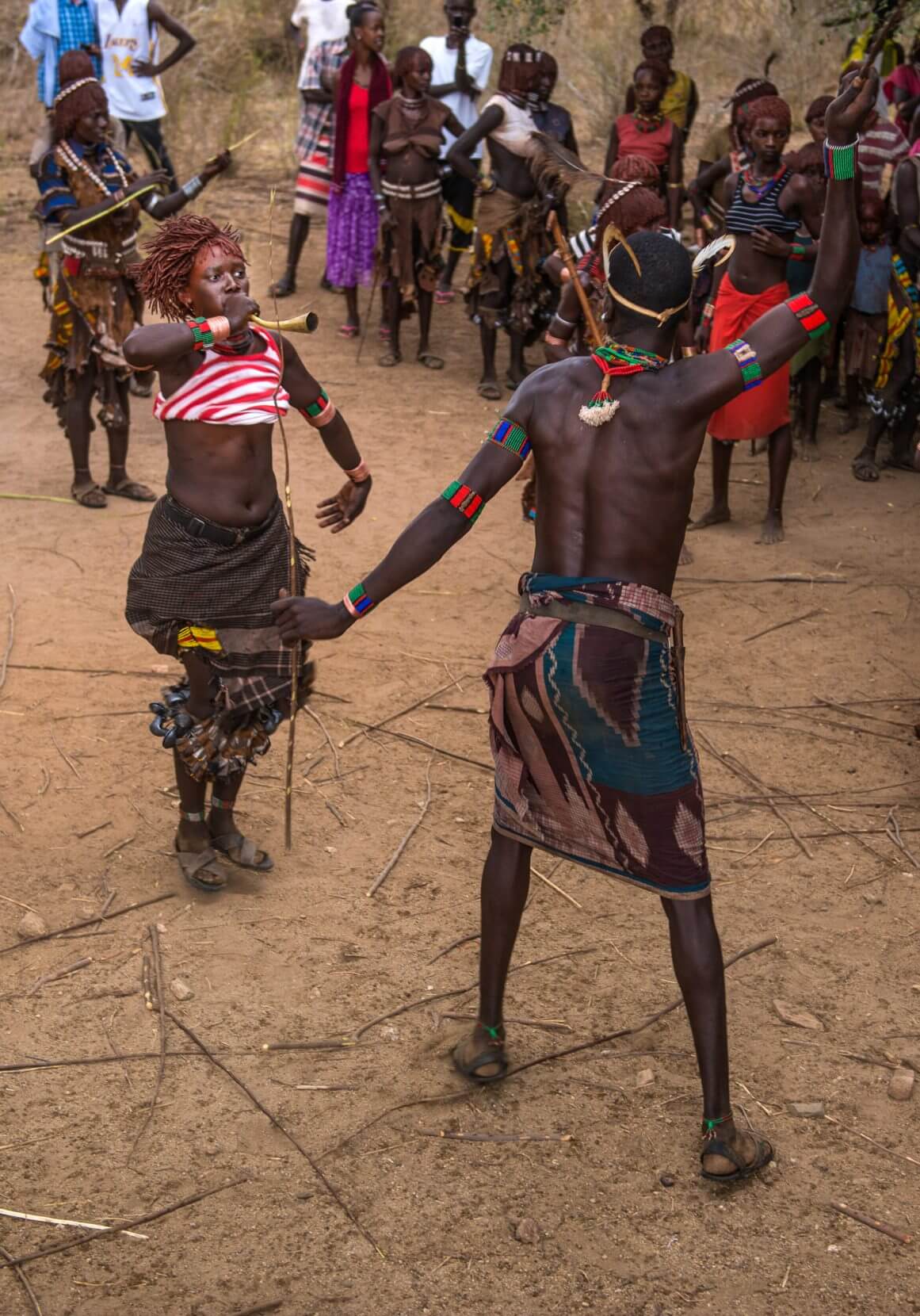
A Hamar man whips a Hamar woman as part of the Ukuli Bula ceremony. She urges him on. PHOTO: DR. GILAD FISKUS
~~
For centuries, the Mursi, Banna, Hamar, Kara, and others have tried to live separately from the modern world. But the modern world has come to them — in the dam that now threatens their land and livelihoods, in tourists like me who show up with cameras. For many years, I dreamt of visiting this place where the Omo River runs.
At 472 miles long, the Omo is one of the longest rivers in Ethiopia. It begins in the Ethiopian highlands and falls almost 2,300 feet as it makes its way down to the valley and empties into the northern reaches of Lake Turkana.
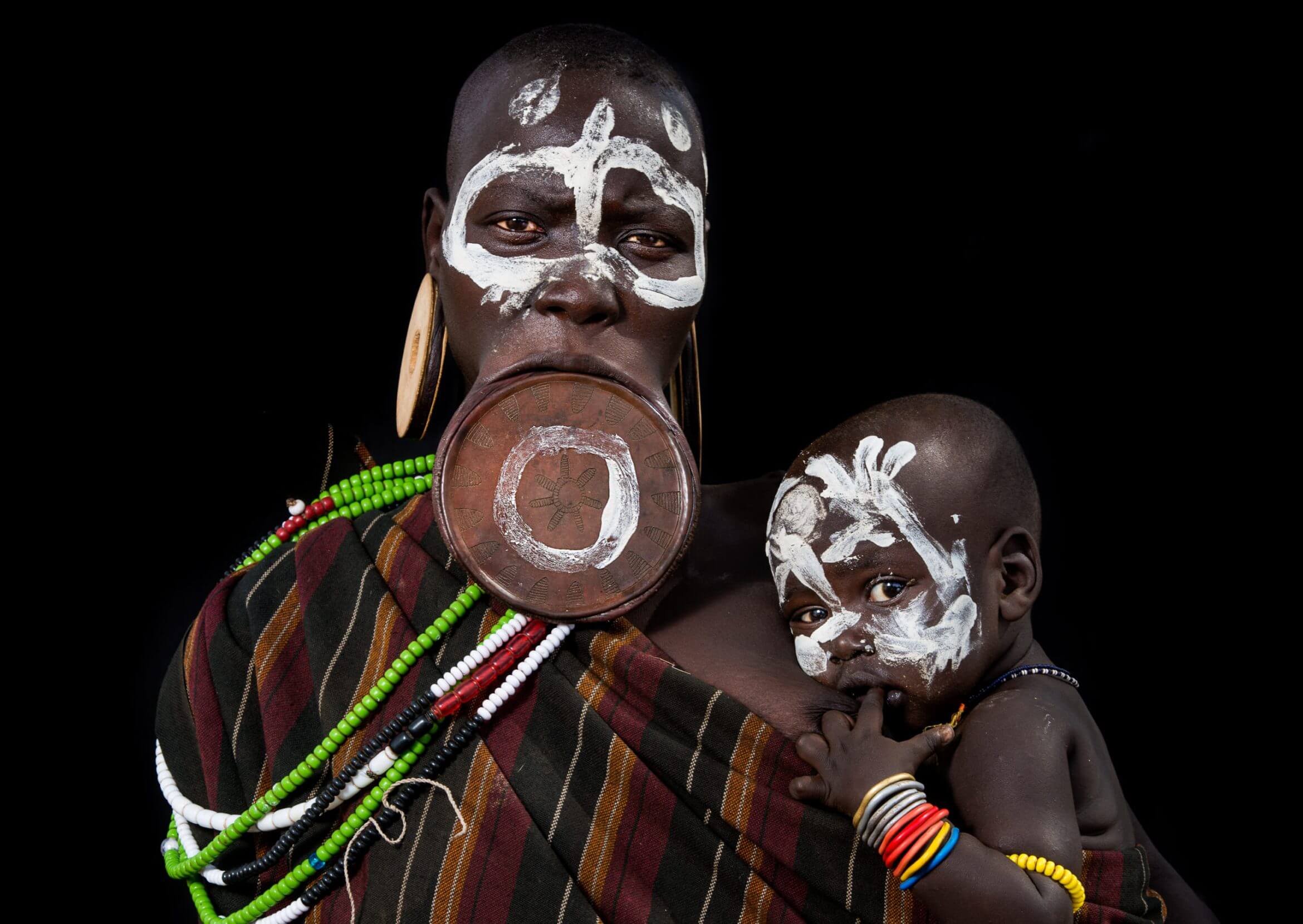
Mursi teenage girls have their lower lip pierced before their wedding day. Wooden or clay plates of increasing size are inserted in the piercing, with the final plate measuring four to eight inches in diameter. The tradition began as a way to protect young women from slavery. Today, the adornment often symbolizes beauty and prestige — the bigger the plate, the higher the woman’s social and economic standing. PHOTO: DR. GILAD FISKUS
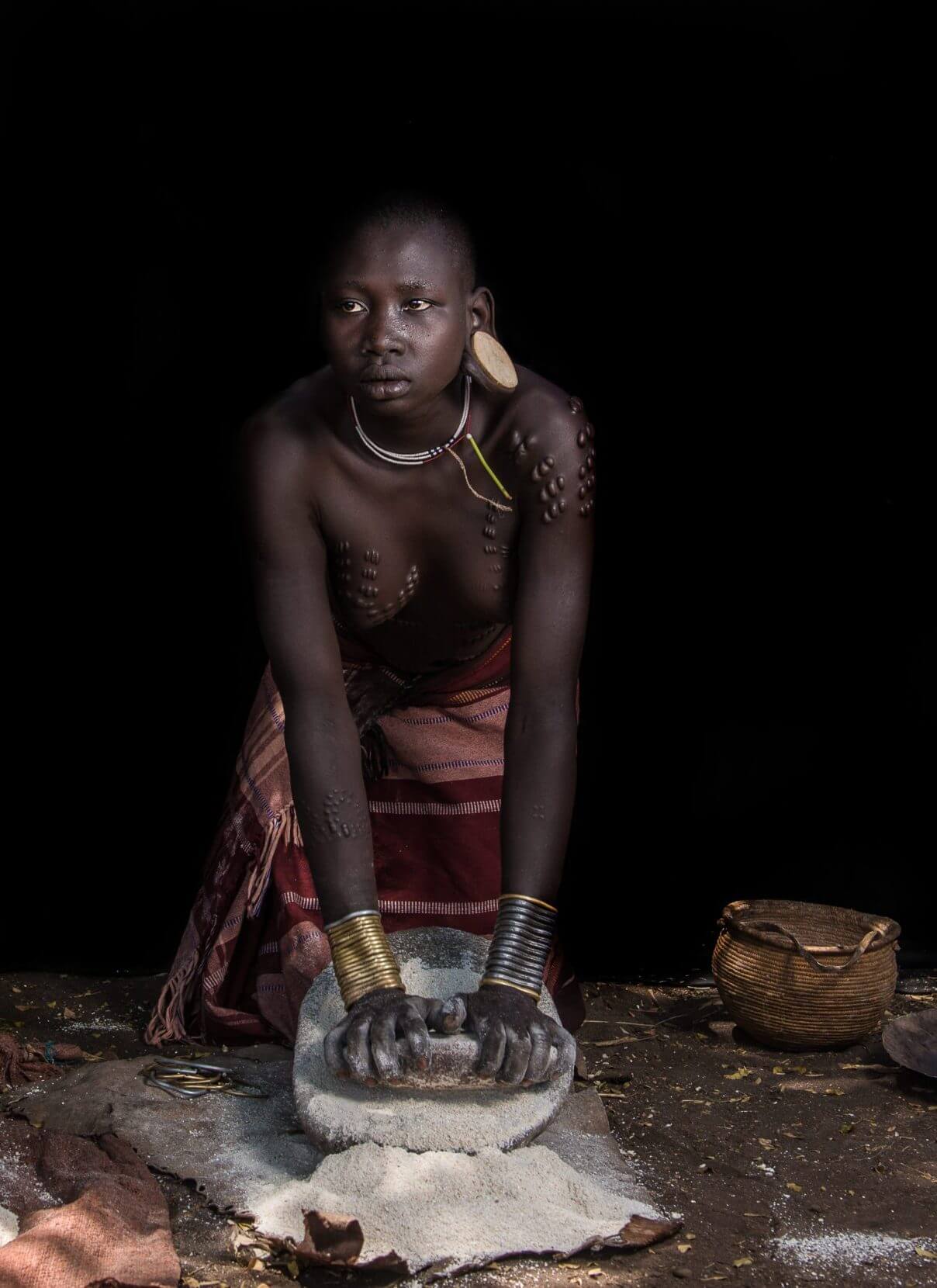
Scarification patterns are one of the beautification rituals for young women in the Lower Omo Valley. Marks may be made by lifting the skin with a curved tool and then cutting the skin with a sharp razor blade. PHOTO: DR. GILAD FISKUS

The people of the eight tribes of the Lower Omo Valley are united by their sense of community and dedication to their rituals and beliefs. The ancestors of these young women of the Banna tribe have called this region their home for centuries. PHOTO: DR. GILAD FISKUS
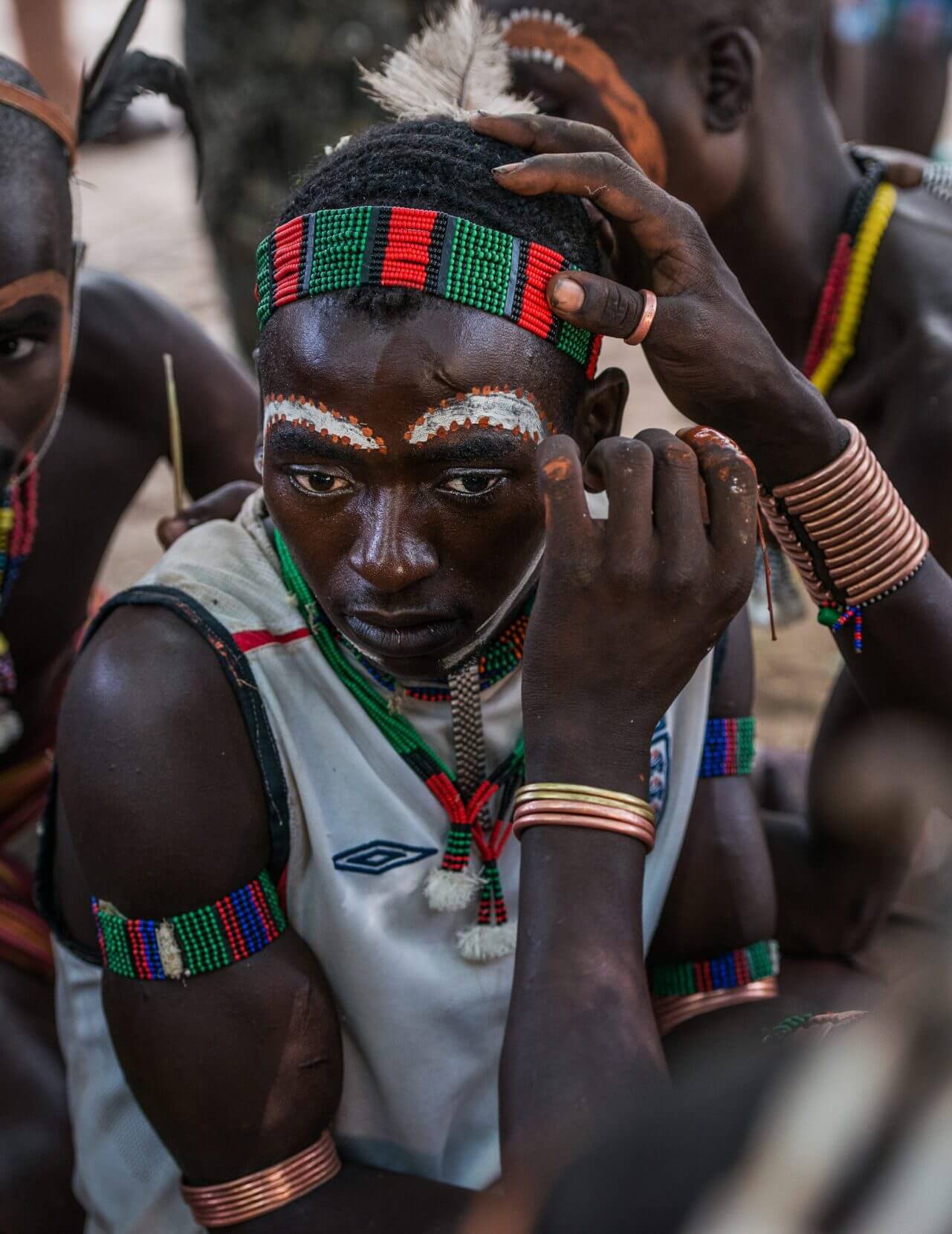
Pastes made from water and minerals are used for body art during ceremonies. For Banna men and boys, these decorations symbolize their manhood. PHOTO: DR. GILAD FISKUS
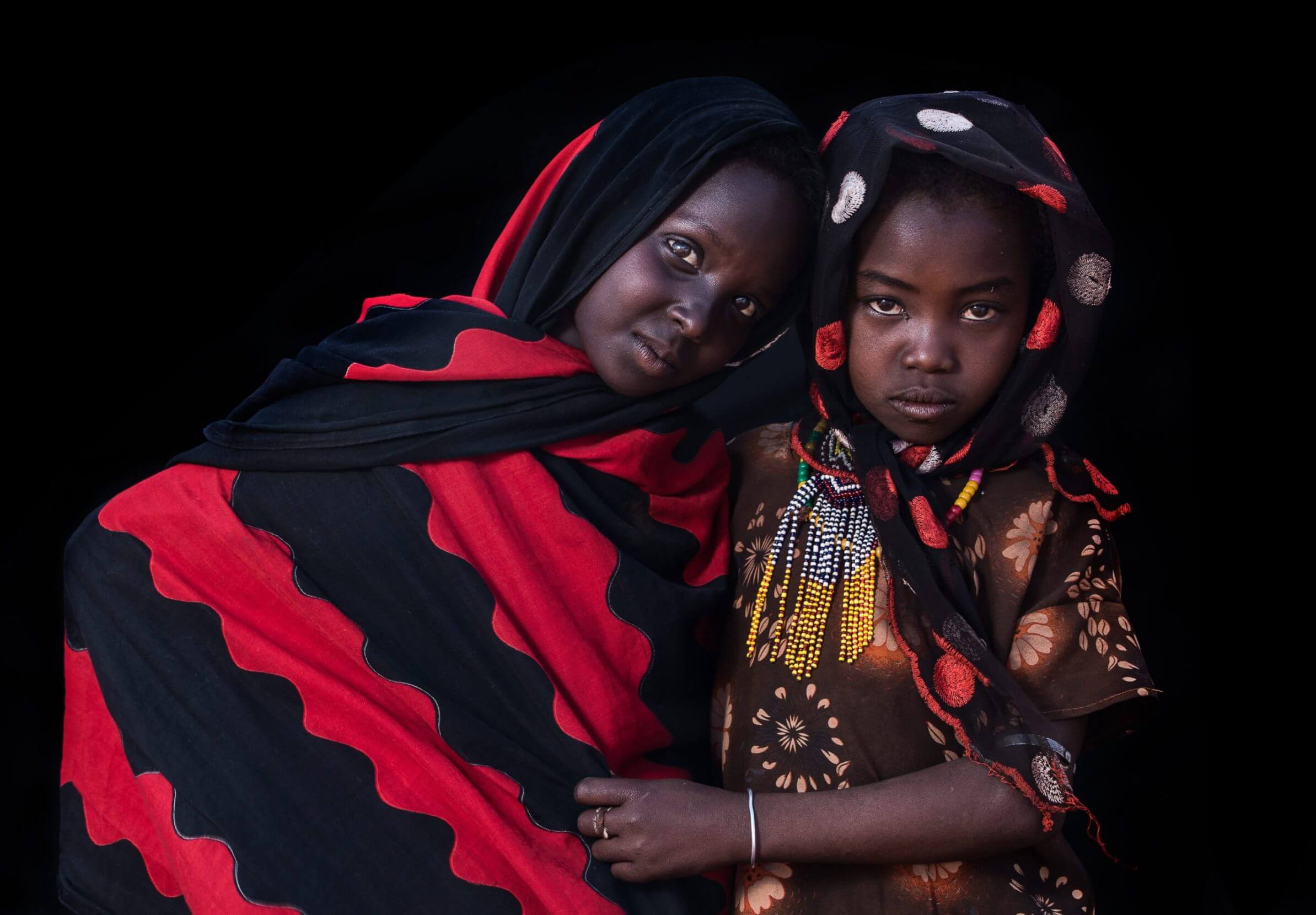
The children of the Borana Oromo people speak a dialect of the Oromo language. Historically, the Borana Oromo were known for their democratic system of government. PHOTO: DR. GILAD FISKUS
The people who live here depend on the river just as their ancestors did. In this dry and harsh environment, their livelihoods are tied to the Omo’s annual floods.
But now the river’s future is uncertain and so is theirs. Gibe III — a dam built on the Omo by an Italian company and funded in part by the Chinese government — is now complete. Canals redirect precious water to oil palm and cotton plantations. To make room for commercial crops, the government forcibly resettles the people who call the Lower Omo their home. Gibe IV and Gibe V are in the works.
Everything is changing. But the rituals remain.
~~
Three hours later, when the dancing and whipping cease, my exhilaration turns to exhaustion, though I myself have endured nothing of consequence. I follow the crowd. Suddenly, dozens of bulls emerge from the village and are pushed into an untidy circle. In the center, six bulls are arranged in a row. They are smeared in dung to make them slippery.
The singing and dancing resumes.

The dancing and singing continue for hours as the women offer their blood and pain as signs of love and devotion. DR. GILAD FISKUS
Suddenly, the guest of honor — a stark naked boy of about 15 — emerges from the crowd.
Ukuli Bula is a centuries-old tradition that must be completed before a Hamar man can marry and begin his own herd. Fathers decide when their sons are ready and though children as young as five years old can participate, typically a boy is in their mid-teens. Once a father decides that his son is ready, the ceremony is scheduled based on how long it will take to gather supplies and prepare a feast for those who attend.
In preparation for the ceremony, the young man has been stripped of his clothes, and his head has been partially shaved. He has been rubbed with sand and perhaps also rubbed with dung. Strips of bark are wrapped around his chest for spiritual protection. The feast is waiting.
There is a lightness in the boy’s step as he hops atop the first bull and begins running.

The moment has arrived. The stakes are high as a teenage Hamar boy hops atop the dung-smeared bulls and begins running. If he can make it back and forth four to six times, he will be considered a man in his community and will be permitted to marry and begin his own family. PHOTO: DR. GILAD FISKUS
Typically, a boy must run back and forth four to six times without falling. If he is blind or otherwise infirmed, the community will help him. I turn to my driver.
“What if he falls?” I ask. I am anxious for the boy.
“He has three to four chances,” my driver answers.
“Well, what if he still can’t make it?” I ask.
“He will always have next year.”
During our quiet conversation, the boy passes his test on the first attempt. The crowd fills with pride and applauds.
The boy is now a man.
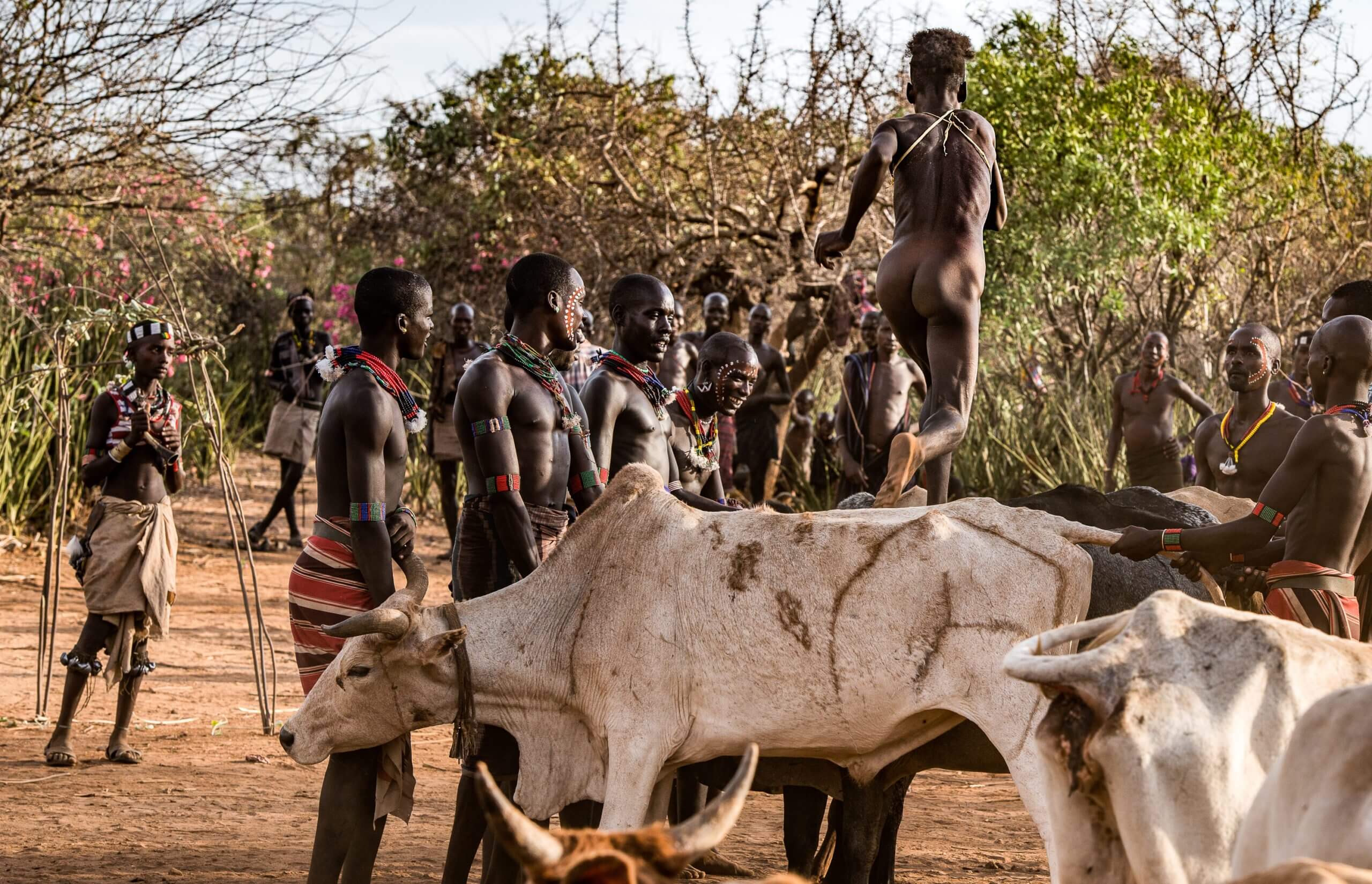
But what will become of the children who come after—not just the Hamar children, but those of the other seven tribes that live here? What will become of their home?
But what will become of the children who come after—not just the Hamar children, but those of the other seven tribes that live here? What will become of their home?
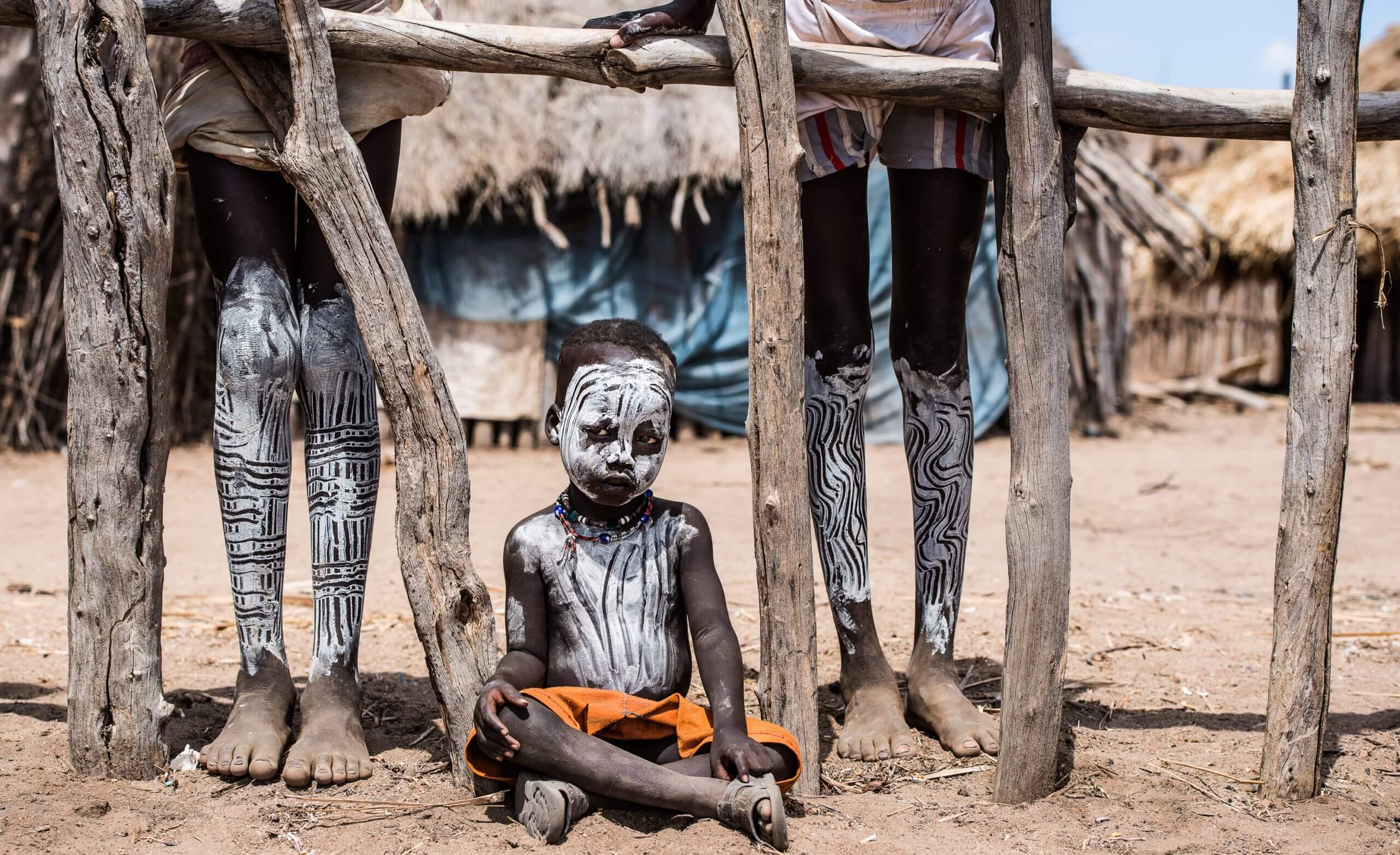
A Kara child sits on the ground flanked by the legs of Kara adults. What will become of him as the modern world invades the Lower Omo Valley? DR. GILAD FISKUS
Everything is changing.
But the rituals remain… for now.
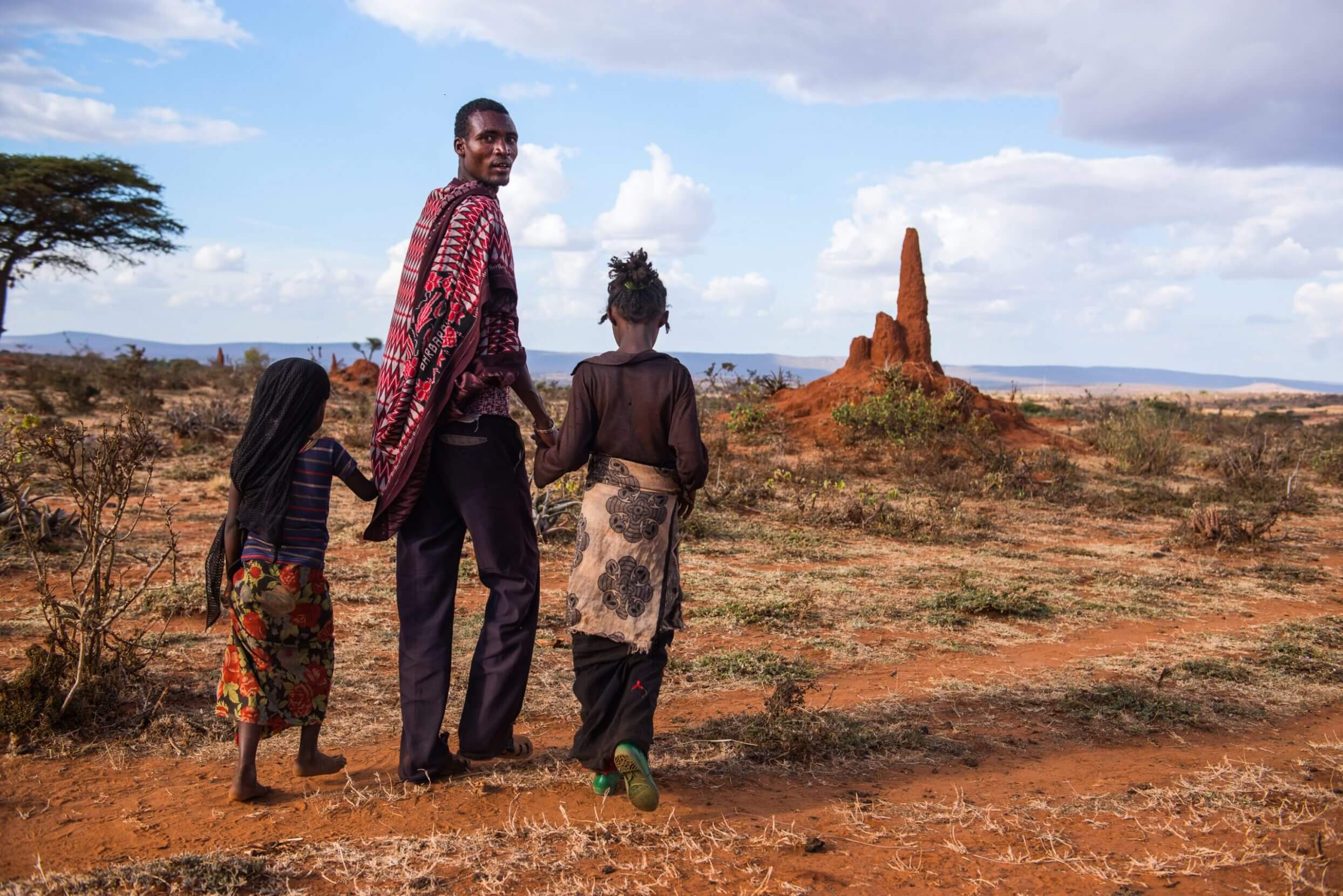
The future is uncertain for the Borana Oromo people and everyone who calls the Lower Omo Valley home. PHOTO: DR. GILAD FISKUS
Dr. Gilad Fiskus
Dr. Gilad Fiskus is a cultural photographer whose career as a dentist influences the way he photographs people as he travels the world.
Never miss a story
Subscribe for new issue alerts.
By submitting this form, you consent to receive updates from Hidden Compass regarding new issues and other ongoing promotions such as workshop opportunities. Please refer to our Privacy Policy for more information.


